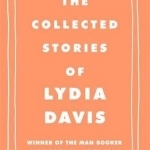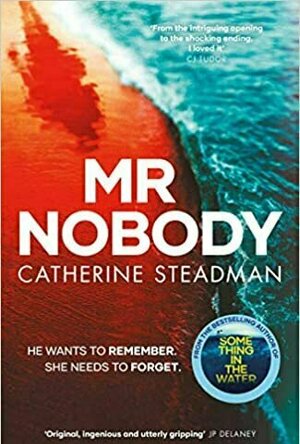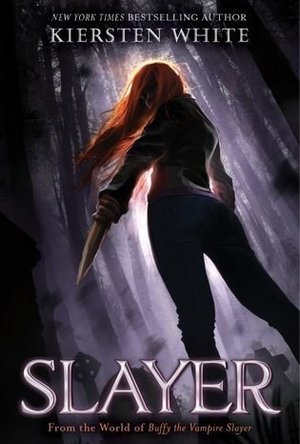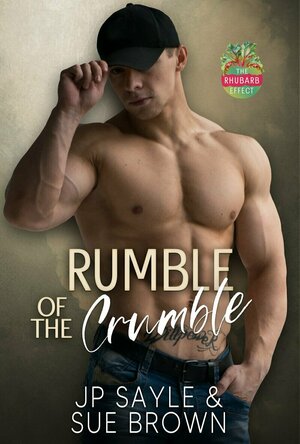Search
Search results
Goddess in the Stacks (553 KP) rated Slayer (Slayer #1) in Books
Apr 1, 2019
I am a Buffy fan. I'm not the biggest Buffy fan I know - that honor goes to a friend of mine, who I just gave a giant box of Buffy comic to, since we're downsizing in preparation for the move to the new house. I haven't seen anyone that happy in a while, and it made my day. (And hers, judging from the bouncing and squeeeeing and hugging!) But I am still a Buffy fan. I own DVDs of the entire show, plus Angel, plus the original movie. The box of comics I just gave away was Season 8 and some spin offs. Slayer takes place after all of that.
First I'm going to say, if you're not a Buffy fan, seriously don't bother with this book. You won't understand a lot of what goes on, and while there are cursory explanations given in the book, it's really not meant for people that haven't watched/read the rest of the world. You'd be okay not knowing much about Angel, but you really do need to have watched the TV show of Buffy, especially that last season. While the book takes place after the comics, they're not necessary to understand the plot as that, at least, is explained.
So, for the rest of us Buffy fans, this is a great continuation of the Buffy-verse. Nina is the daughter of Watchers - in fact the daughter of Buffy's first watcher, the one before Giles. Given what befell the Watchers, the ones that are left are kind of antagonistic towards Slayers in general and Buffy in particular. So when Nina becomes a Slayer, her world goes sideways.
The world is mostly the same, but with a twist due to events in the comics. (It's explained. You don't need to have read them.) The book expands on how Slayer powers work, a bit, especially their dreams now that there's more than one of them alive at a time. We do see mentions of familiar characters, with one notable scene where an old favorite appears briefly.
I really enjoyed the book, and I'm eager to read the second half of the duology when it comes out. I need to know how Nina's story ends! The book ended on a subtle cliffhanger; the main conflict has been resolved, and the characters think it's over, but we know it's not. Similar to how many episodes of Buffy ended, actually.
So yeah. If you're a Buffy fan, pick up this book, it's pretty great. If you're not - take a pass. Or start with the TV show and get yourself a new fandom if you're feeling bored!
You can find all my reviews at http://goddessinthestacks.com
First I'm going to say, if you're not a Buffy fan, seriously don't bother with this book. You won't understand a lot of what goes on, and while there are cursory explanations given in the book, it's really not meant for people that haven't watched/read the rest of the world. You'd be okay not knowing much about Angel, but you really do need to have watched the TV show of Buffy, especially that last season. While the book takes place after the comics, they're not necessary to understand the plot as that, at least, is explained.
So, for the rest of us Buffy fans, this is a great continuation of the Buffy-verse. Nina is the daughter of Watchers - in fact the daughter of Buffy's first watcher, the one before Giles. Given what befell the Watchers, the ones that are left are kind of antagonistic towards Slayers in general and Buffy in particular. So when Nina becomes a Slayer, her world goes sideways.
The world is mostly the same, but with a twist due to events in the comics. (It's explained. You don't need to have read them.) The book expands on how Slayer powers work, a bit, especially their dreams now that there's more than one of them alive at a time. We do see mentions of familiar characters, with one notable scene where an old favorite appears briefly.
I really enjoyed the book, and I'm eager to read the second half of the duology when it comes out. I need to know how Nina's story ends! The book ended on a subtle cliffhanger; the main conflict has been resolved, and the characters think it's over, but we know it's not. Similar to how many episodes of Buffy ended, actually.
So yeah. If you're a Buffy fan, pick up this book, it's pretty great. If you're not - take a pass. Or start with the TV show and get yourself a new fandom if you're feeling bored!
You can find all my reviews at http://goddessinthestacks.com

The Collected Stories of Lydia Davis
Book
The Collected Stories of Lydia Davis is the complete collection of short fiction from the...

Mr. Nobody
Book
When a man is found on a Norfolk beach, drifting in and out of consciousness, with no identification...
Debbiereadsbook (1569 KP) rated Rumble of the Crumble (The Rhubarb Effect #7) in Books
Feb 6, 2025
Butch will go slow (but not too slow) and wait for Leo, scars and all.
Independent reviewer for Archaeolibrarian, I was gifted my copy of this book.
This is the FINAL book in this series, and you really should read the other 6 books before this one. They are a lot of fun, but there is an ongoing story arc that you need to follow.
Leo is a lion, and an Alpha. Butch is the town's sheriff, a rhubarb and also an Alpha. Two Alphas should not be mates, should they?
Ok SO! I have thoroughly enjoyed these books, every one has been a solid 4 star read and I was hoping that this one would give me the answers to the questions my book brain has been throwing around. But in true Sayle fashion, she does not, in fact, give me the answers but I am at least able to voice the questions! I'll come back to those, though!
Leo is scared, he suffered badly at the hands of the monster alpha Amell in their old pride. But Butch will go slow (but not too slow) and wait for Leo, scars and all. Until someone tries to kill the entire pride, babies and all. Leo and Butch know they have to work together to get Amell, and put a stop to his reign of terror, once and for all.
I liked that Butch would wait for Leo, he knows the lion has scars, some not as visible as others, and he knows WHY Leo is so scared, but Butch knows Leo is his mate and Leo just needs time.
I liked that Leo felt safe with Butch. He didn't feel that way with anyone else but his pride. Leo knows Butch will never hurt him, even if they never fully mate after completing the bond that stopped Butch from wilting.
I even liked the way it all went down at the end! I did not see that happening, I thought someone else might be the one to do it.
So, like I said, thoroughly enjoyed these books!
BUT questions! Now, I might have missed the answers to these questions, I'm not sure but I'm sure someone will tell me!
While we know that Leo has scars from Amell, I wanted to know WHY Amell did what he did to Leo, and just WHAT he did, I really did. That's what my book brain was screaming at me, through the whole series, really. However, now I'm typing this up, I'm changing my mind. These books are, for the most part, a lot of fun, with a bit of drama thrown in, and a hella lotta smexy times between the various couples. If we had all the gory details about what Amell did and why, it might have taken these books down a much darker path and I really don't think they needed them. So, I'm gonna let that knowledge go.
As the final book, and due to me letting those questions go,
a full and shiny 5 stars
*same worded review will appear elsewhere
This is the FINAL book in this series, and you really should read the other 6 books before this one. They are a lot of fun, but there is an ongoing story arc that you need to follow.
Leo is a lion, and an Alpha. Butch is the town's sheriff, a rhubarb and also an Alpha. Two Alphas should not be mates, should they?
Ok SO! I have thoroughly enjoyed these books, every one has been a solid 4 star read and I was hoping that this one would give me the answers to the questions my book brain has been throwing around. But in true Sayle fashion, she does not, in fact, give me the answers but I am at least able to voice the questions! I'll come back to those, though!
Leo is scared, he suffered badly at the hands of the monster alpha Amell in their old pride. But Butch will go slow (but not too slow) and wait for Leo, scars and all. Until someone tries to kill the entire pride, babies and all. Leo and Butch know they have to work together to get Amell, and put a stop to his reign of terror, once and for all.
I liked that Butch would wait for Leo, he knows the lion has scars, some not as visible as others, and he knows WHY Leo is so scared, but Butch knows Leo is his mate and Leo just needs time.
I liked that Leo felt safe with Butch. He didn't feel that way with anyone else but his pride. Leo knows Butch will never hurt him, even if they never fully mate after completing the bond that stopped Butch from wilting.
I even liked the way it all went down at the end! I did not see that happening, I thought someone else might be the one to do it.
So, like I said, thoroughly enjoyed these books!
BUT questions! Now, I might have missed the answers to these questions, I'm not sure but I'm sure someone will tell me!
While we know that Leo has scars from Amell, I wanted to know WHY Amell did what he did to Leo, and just WHAT he did, I really did. That's what my book brain was screaming at me, through the whole series, really. However, now I'm typing this up, I'm changing my mind. These books are, for the most part, a lot of fun, with a bit of drama thrown in, and a hella lotta smexy times between the various couples. If we had all the gory details about what Amell did and why, it might have taken these books down a much darker path and I really don't think they needed them. So, I'm gonna let that knowledge go.
As the final book, and due to me letting those questions go,
a full and shiny 5 stars
*same worded review will appear elsewhere

IBM Notes Traveler Companion
Business and Productivity
App
IBM® Notes® Traveler Companion offers IBM Domino® mail extensions for Domino mail. Now, users who...

Save Me (Make or Break, #3)
Book
Save Me can be read as a standalone. “I don’t care! Do you hear me? I don’t care Pierce!”...
postapocalypticplayground (27 KP) rated The Last Namsara in Books
Jan 9, 2018
Where the Namsara brings life the Iskari brings death. Asha is the Iskari, death bringer and dragon hunter. Cursed with a lifetime of knowing it was her fault that dragons had come to ransack her town when she was a child, she is feared and reviled. It was her mother telling her the Old Stories of dragons that brought them, a balm to her nightmares with horrendous consequences. Asha has dedicated her young life to slaying the dragons, although now with them dwindling in numbers she must take drastic action to ensure a successful hunt. Asha must tell the outlawed Old Stories again.
The last Namsara is very much a book of revelations for Asha. The dragon attack when she was a child left her without a mother and also horrible scarred from the burns she suffered. Having to not only live with the fact that she is hated she also has to deal with the stares associated with her disfigurement, the armour she wears is both necessary for her hunt and for her emotional wellbeing. When her secret is out following an accident during a hunt, she is tended to by Torwin, her betrothed’s slave, who seemingly is willing to keep her secret, but at what cost to both of them?
Through a series of cruel acts she finds herself visited by the first Namsara who starts her on a path that will not only unravel the truth about what happened the day of the dragon attack, but also a much deeper and long running deception. Asha must therefore right the wrongs.
I very much liked Asha as a character, I found that she was written with both strength and vulnerability, she has always been the Iskari and that has given her an opportunity to hide behind a persona. She is however still a teenager and she has the same hopes and fears as everyone, but her hardened act is thankfully easy to scratch beyond the surface of. The book was an easy flowing read and I particularly liked how the Old Stories were interwoven into the pages, completing parts of the story and acting almost like a running prologue. It was a great way of explaining a complicated back story without being an info dump on the reader. I also found that there was a great deal of realism about the aftermaths of events, the fact that laws can’t be changed to suit the sovereign and that one persons change for the better will always be anothers change for the worse. It didn’t shy away from the ugly side of things and that always gets good marks from me.
That being said, I found the Last Namsara lacked a certain spark. I enjoyed reading it very much don’t get me wrong, but it didn’t have my pulse racing and I found it easy to put down of an evening. I would still recommend this to anyone who is a fan of dragons and kick ass female protagonists as it really does have a lot to like.
The last Namsara is very much a book of revelations for Asha. The dragon attack when she was a child left her without a mother and also horrible scarred from the burns she suffered. Having to not only live with the fact that she is hated she also has to deal with the stares associated with her disfigurement, the armour she wears is both necessary for her hunt and for her emotional wellbeing. When her secret is out following an accident during a hunt, she is tended to by Torwin, her betrothed’s slave, who seemingly is willing to keep her secret, but at what cost to both of them?
Through a series of cruel acts she finds herself visited by the first Namsara who starts her on a path that will not only unravel the truth about what happened the day of the dragon attack, but also a much deeper and long running deception. Asha must therefore right the wrongs.
I very much liked Asha as a character, I found that she was written with both strength and vulnerability, she has always been the Iskari and that has given her an opportunity to hide behind a persona. She is however still a teenager and she has the same hopes and fears as everyone, but her hardened act is thankfully easy to scratch beyond the surface of. The book was an easy flowing read and I particularly liked how the Old Stories were interwoven into the pages, completing parts of the story and acting almost like a running prologue. It was a great way of explaining a complicated back story without being an info dump on the reader. I also found that there was a great deal of realism about the aftermaths of events, the fact that laws can’t be changed to suit the sovereign and that one persons change for the better will always be anothers change for the worse. It didn’t shy away from the ugly side of things and that always gets good marks from me.
That being said, I found the Last Namsara lacked a certain spark. I enjoyed reading it very much don’t get me wrong, but it didn’t have my pulse racing and I found it easy to put down of an evening. I would still recommend this to anyone who is a fan of dragons and kick ass female protagonists as it really does have a lot to like.
Kristy H (1252 KP) rated You Must Not Miss in Books
Jun 21, 2019
Magpie Lewis has been abandoned. Her father left. Then her sister, Eryn, too. Now it's just Magpie and her mom. Who truly isn't really present, as she drowns herself in booze and a haze of alcoholism. Magpie's sister left the same night as Brandon Phipps's party--after which Magpie's longtime friendship with Allison ended, and Magpie was branded a slut and left to be an outcast at school. So she starts writing in a yellow notebook, creating a world called Near. It's Magpie's magical place, where everything is perfect: no cheating father, no drunk mom, no missing sister, and no horrific school experiences. She thinks up Near so clearly, so fully, that she wills it into existence, and Magpie realizes that in Near, she can have it all: even revenge on those who have hurt her.
"There was one month left of her sophomore year of high school, and she had decided, after a mountain of evidence to support it, that the entire world was a joke."
I just love Katrina Leno, and her beautiful writing. You Must Not Miss is no exception: it's a poetic, stark take on high school friendship, rape culture, and the ties that bind us. The story is a clever variation of "One for Sorrow." Magpie is our main character and takes center stage: it's hard not to feel sympathetic for this poor abandoned girl--with no family who cares for her and, for a while, no friends.
"If you give a name to an impossible thing, does it make the impossible thing any less impossible?
But then the story takes a dramatic, dark twist--as Magpie creates Near both in her mind and in reality--and as Magpie's portal to another world takes true shape, we see our character find strength before our very eyes. I won't lie, I'm not sure this book is for everyone. It reminded me in some ways of a Maggie Stiefvater novel. It's true magical realism, and there's a suspension of disbelief to be had, to be sure. But it's a book that I feel like Leno was meant to be write. Her way of eviscerating rape culture, misogyny, and more is so adept, so searing. It is a call to arms to those who are not believed, who are ignored and mocked, who are the ones who see their lives ruined when the attackers run free.
In this way, You Must Not Miss is a strong, complex book tackling a tough topic. It may be difficult for some that this topic is underneath the magical world of Near, but I liked how that was what Magpie needed to deal with all that happened to her. Beware, this book is brutal at times (and yes, there's a trigger warning for rape/sexual assault). But it's beautifully written, too. It's complicated, much like its subject matter and its protagonist, who is still trying to figure herself out, as well. It's a different read, but if you're willing to give it a try, I think you'll be glad you did. 4 stars.
"There was one month left of her sophomore year of high school, and she had decided, after a mountain of evidence to support it, that the entire world was a joke."
I just love Katrina Leno, and her beautiful writing. You Must Not Miss is no exception: it's a poetic, stark take on high school friendship, rape culture, and the ties that bind us. The story is a clever variation of "One for Sorrow." Magpie is our main character and takes center stage: it's hard not to feel sympathetic for this poor abandoned girl--with no family who cares for her and, for a while, no friends.
"If you give a name to an impossible thing, does it make the impossible thing any less impossible?
But then the story takes a dramatic, dark twist--as Magpie creates Near both in her mind and in reality--and as Magpie's portal to another world takes true shape, we see our character find strength before our very eyes. I won't lie, I'm not sure this book is for everyone. It reminded me in some ways of a Maggie Stiefvater novel. It's true magical realism, and there's a suspension of disbelief to be had, to be sure. But it's a book that I feel like Leno was meant to be write. Her way of eviscerating rape culture, misogyny, and more is so adept, so searing. It is a call to arms to those who are not believed, who are ignored and mocked, who are the ones who see their lives ruined when the attackers run free.
In this way, You Must Not Miss is a strong, complex book tackling a tough topic. It may be difficult for some that this topic is underneath the magical world of Near, but I liked how that was what Magpie needed to deal with all that happened to her. Beware, this book is brutal at times (and yes, there's a trigger warning for rape/sexual assault). But it's beautifully written, too. It's complicated, much like its subject matter and its protagonist, who is still trying to figure herself out, as well. It's a different read, but if you're willing to give it a try, I think you'll be glad you did. 4 stars.





